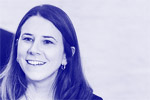All posts by Corinne LeTourneau
Editors' note: In writing Legible Practises we told the stories of six teams working towards systemic change in their communities, organizations, and institutions. In the book you will find our perspective. Below you will find a personal perspective from Corinne LeTourneau, who played a key role in the Brownsville case study.
—
The sense of excitement in the community center was palpable as a group of 200 people started chanting, “Where is HOPE? Inside Brownsville!” This was a landmark moment for the Brownsville Partnership, a community revitalization initiative spearheaded by Community Solutions. This display of enthusiasm took place at the conclusion of the Hope Summit, an event which kicked off a yearlong community planning process in partnership with community members, helping community members to work together to shift the conditions that perpetuate poverty in their neighborhood. The Hope Summit not only serves as an important mechanism for partnering with the community to formalize its vision, but also represents the culmination of years of patience and building trust with community members in the neighborhood of Brownsville.
Brownsville, Brooklyn is one of New York City’s most troubled neighborhoods. The vitals of Brownsville make for grim reading: poverty, crime, homelessness, unemployment, child welfare, education, and health. More than one-third of Brownsville families live below the poverty line, unemployment is higher than average, and 29% of the population left high school without a degree. In short, the community has struggled in recent years by almost every indicator. Community Solutions began working in Brownsville in 2005 and established the Brownsville Partnership in 2008 in hopes of making Brownsville a safer, healthier, more prosperous community.
We knew that we would need to earn the trust of the community if we hoped to make a difference. As outsiders we might be construed as ‘parachuting’ into the neighborhood if we did not place community partnership and engagement at the forefront of our goals. Thus, the newly formed Brownsville Partnership started seeking out neighborhood leaders for collaboration. This search quickly brought Community Solutions’ president, Rosanne Haggerty, and the BP team into contact with the unofficial mayor of Brownsville, Greg Jackson.
Jackson grew up in Brownsville, briefly played in the NBA, and returned to his community to run the Brownsville Recreation Center, one of the few strong community institutions at the time. Jackson was a trusted neighborhood leader who loved the “village” of Brownsville from his childhood and continually sought ways to help people see the hope inside Brownsville. Haggerty and Jackson hit it off immediately. Jackson was immediately drawn to Haggerty’s vision for neighborhood change and her desire to get things done. He sensed that Haggerty and her team were not going anywhere and they were in it for the long haul. In Jackson, we found someone who could bring local authenticity to the effort in a way no one else could.
Jackson’s enthusiasm led to him joining the BP as it’s first director. Together, Jackson, Haggerty, and the entire BP team recognized that they had to work at building trust every day in the community to convince a weary Brownsville neighborhood that we would not abandon them like many organizations had done before. This required a mix of both patience and urgency. It would take time for the community to be convinced that the BP could enable positive change, but we also needed to bring a sense of urgency to building widespread trust and social capital within the community. It soon became clear that for the community to trust in the BP, they needed to see evidence of change being possible.
Making visible change in response to residents’ concerns became a theme early on. For instance, in 2009 the community shared its concerns about the quality of food found in markets throughout the area. The BP immediately sought out a partnership with a farmer’s market operator to bring quality, healthy food into the community. By summer 2010, the farmer’s market stand launched and the quick response to the food needs and the visibility of the project proved to be a “trust multiplier”. Even community members who did not purchase produce at the market, still saw something different and positive in their community. This model of making visible things happen soon became an ethos when developing new projects or programs. New health programming was deployed in the form of neighborhood bike tours, walking groups, and visible wayfinding signage and maps to encourage walkability. Community meetings now took place on neighborhood corners and the farmer’s market expanded to two additional locations to increase the BP’s visibility. The community was beginning to believe change could happen; they could see it happening.
Our work also benefitted from the involvement of local residents, which helped us further strengthen the ties of trust. The BP invested in staff dedicated to community organizing, outreach, and mobilization. Our community mobilization team consists principally of residents who have successfully resolved their own past challenges with the help of the BP and now utilize their rich local networks to spread the word about the BP and encourage participation. Small, structured house meetings—"Coffee Klatches"—are often the vehicles for this process.
These house meetings serve as a means to listen to the community and hear their concerns, and also to develop achievable solutions in partnership with community members. For instance, community members expressed concern over the lack of activities for youth in Brownsville. The community mobilizing team then used additional "Coffee Klatches" to discuss solutions and launched a local youth resource fair. The community mobilization staff has also become ambassadors for the BP and represent the BP at community meetings and events.
Investing in these staff members assists the BP with sustaining trust and hope in Brownsville by building a permanent, seven day a week presence in the community and creating a continuous feedback loop for community concerns. Having a deep connection to the local context enables the community organizing team to help the BP understand the specific needs of specific people within the neighborhood, thus enabling us to develop initiatives that respond to the actual context of residents lives and meet the needs of real people.
For more about Brownsville, check out the relevant chapter in Legible Practises!




